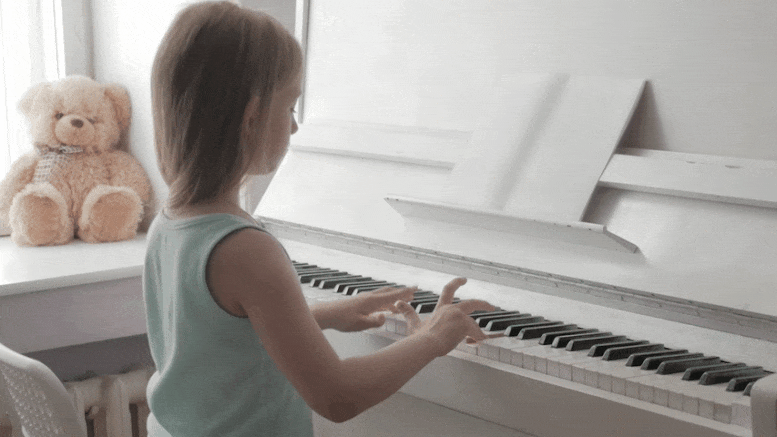Understanding Neurodiversity: Navigating Intimate Relationships with Autism

Neurodiversity is a beautiful tapestry of human cognition and experience, with each thread adding its unique hue to the grand picture of humanity. Within this spectrum, autism stands out as a particularly distinct and vibrant shade, imbued with its own set of challenges and gifts. Yet, like everyone, individuals on the autism spectrum seek connection, intimacy, and understanding in their romantic relationships.
This article delves deep into the nuances of intimate relationships when one or both partners are autistic, shedding light on the unique dynamics that unfold. From the challenges in communication to the joys of shared understanding, the journey of neurodiverse relationships is both intricate and rewarding.
The Spectrum of Connection: How Autism Shapes Romantic Bonds
Autism, often characterised by its unique cognitive and sensory processing patterns, undoubtedly influences the way individuals form and maintain romantic bonds. This isn’t to suggest a deficit, but rather a different pathway to connection. Autistic individuals might experience emotions deeply, with a richness that can sometimes be overwhelming.
Yet, expressing these emotions or understanding those of others can be a challenge. Love, for many on the spectrum, is not just an emotion but also an action. It’s seen in the detailed ways they remember their partner’s preferences or in the steadfast loyalty they often display. The autistic romantic bond, while sometimes punctuated by moments of misunderstanding, is frequently underscored by an unwavering dedication and a unique depth.
Communication Challenges and Triumphs: Building Bridges in Neurodiverse Relationships
Effective communication stands as a cornerstone of any strong relationship. For neurodiverse couples, this can be both a challenge and a triumph. The challenges often arise from differences in interpreting non-verbal cues or navigating emotional expression. An autistic individual might struggle to convey their feelings through words or to pick up on subtle emotional cues from their partner.
However, the triumphs are equally noteworthy. Many couples develop their own language, a mix of verbal and non-verbal cues, tailored to their unique dynamic. Such couples often find profound depth in their conversations, exploring subjects in great detail or sharing mutual passions with unparalleled enthusiasm. Over time, with patience and understanding, these challenges become opportunities for growth, leading to a resilient and intimate bond.
Sensory Sensitivities: Recognising and Adjusting to Intimate Moments
Navigating the realm of intimate moments can be intricate for anyone, but for those on the autism spectrum, sensory sensitivities can add an additional layer of complexity. An unexpected touch, or even the texture of fabric, can result in discomfort or overstimulation. In the context of intimacy, challenges like erectile dysfunction (ED) can also emerge.
For neurotypical partners, understanding that something like ED, which might require treatments like Caverject for erectile dysfunction, isn’t necessarily about a lack of attraction or desire, but could be influenced by sensory sensitivities or stressors unique to autism. It’s vital for both partners to communicate openly, adjusting to each other’s needs and understanding the potential impacts of sensory sensitivities. With understanding and patience, couples can create a safe space where both can express their needs and navigate intimate moments comfortably.
Empathy in Neurodiverse Relationships: Busting Myths and Embracing Realities
One of the most persistent myths surrounding autism is a purported lack of empathy. However, it’s essential to differentiate between cognitive and affective empathy. While some autistic individuals may find it challenging to intuitively understand or predict another’s emotional response (cognitive empathy), they often feel emotions deeply (affective empathy). This depth of feeling can, in some instances, be so profound that it becomes overwhelming.
In relationships, this might translate into caring deeply for a partner but struggling to express it in conventional ways. Embracing the reality of empathy in autism means recognising its presence and manifestations, even if they don’t align with societal expectations. It’s about valuing the genuine concern and deep emotional connections that many autistic individuals can and do offer in relationships.
Setting Boundaries: The Importance of Understanding and Respect
Setting boundaries is paramount in any relationship, but in the context of neurodiverse partnerships, it gains heightened significance. Given the potential for sensory sensitivities, differences in social understanding, or the need for alone time, clear boundaries can ensure the comfort and well-being of both parties. Establishing these boundaries requires open communication and, more importantly, respect from both partners. It’s not merely about stating needs but understanding and honouring them.
For the neurotypical partner, it might involve learning and recognising the signs when their autistic partner is becoming overstimulated or needs a break. For the autistic individual, it could mean communicating their needs clearly and consistently. With mutual respect and understanding, these boundaries become the foundation for a relationship built on trust and genuine affection.
Dating and Autism: Navigating the Social Dynamics
Dating is an intricate dance of social cues, emotions, and unspoken rules, which can be particularly challenging for those on the autism spectrum. The social dynamics of dating often rely on subtle signals, from the flicker of an eye to the nuance of a phrase. For someone with autism, these can be easy to miss, leading to misunderstandings or missed opportunities. Yet, the autistic approach to dating can also be refreshingly honest, straightforward, and deeply sincere.
While the initial stages of dating may require patience and open communication, many find that relationships with autistic individuals offer a depth and genuineness that’s unparalleled. Embracing the unique dynamics of dating with autism means celebrating authenticity, prioritising clear communication, and cherishing the rich connections that can blossom.
Building Trust: A Foundation for Neurodiverse Partnerships
Trust is the bedrock of any successful relationship. In neurodiverse partnerships, the process of building trust might differ but remains equally crucial. It involves understanding each other’s worldviews, respecting boundaries, and offering unwavering support. For those on the autism spectrum, trust is often deeply linked to consistency and reliability.
Unexpected changes or inconsistencies can be distressing, making the consistent behaviour of a partner immensely reassuring. As trust deepens, the space for open communication expands, allowing both partners to discuss challenges, share joys, and work collaboratively towards a harmonious relationship. In the end, building trust in neurodiverse partnerships is about mutual respect, understanding, and the constant effort to connect and support one another.
Physical Intimacy: Addressing Misconceptions and Celebrating Connections
Physical intimacy is a potent aspect of romantic relationships, intertwined with emotions, trust, and personal boundaries. For those with autism, physical intimacy can be a journey of exploration, understanding, and adaptation. Contrary to misconceptions, many autistic individuals deeply desire and enjoy physical closeness, though they might experience or express it differently.
Sensory sensitivities might dictate preferences in touch or intensity, requiring understanding and adjustments from both partners. However, these nuances can lead to deeper connections, as couples develop unique rhythms of intimacy tailored to their shared comfort and pleasure. By addressing misconceptions and prioritising open communication, physical intimacy can become a beautiful space of mutual exploration and connection.
The Role of Support Systems: Family, Friends, and Therapists in Autistic Relationships
No relationship exists in isolation. The influence of external support systems, be it family, friends, or therapists, plays a significant role in the dynamics of autistic relationships. These systems can provide valuable guidance, understanding, and a safety net for couples navigating the intricacies of neurodiversity.
Families can offer insights into individual behaviours, preferences, and triggers, while friends often provide a space for relaxation and shared experiences. Therapists, especially those experienced in autism, can offer strategies, mediate challenges, and support the growth of the relationship. However, the involvement of these systems should always respect the autonomy and wishes of the couple. In the end, while external support is valuable, the core strength of the relationship always lies in the shared bond of the partners.
